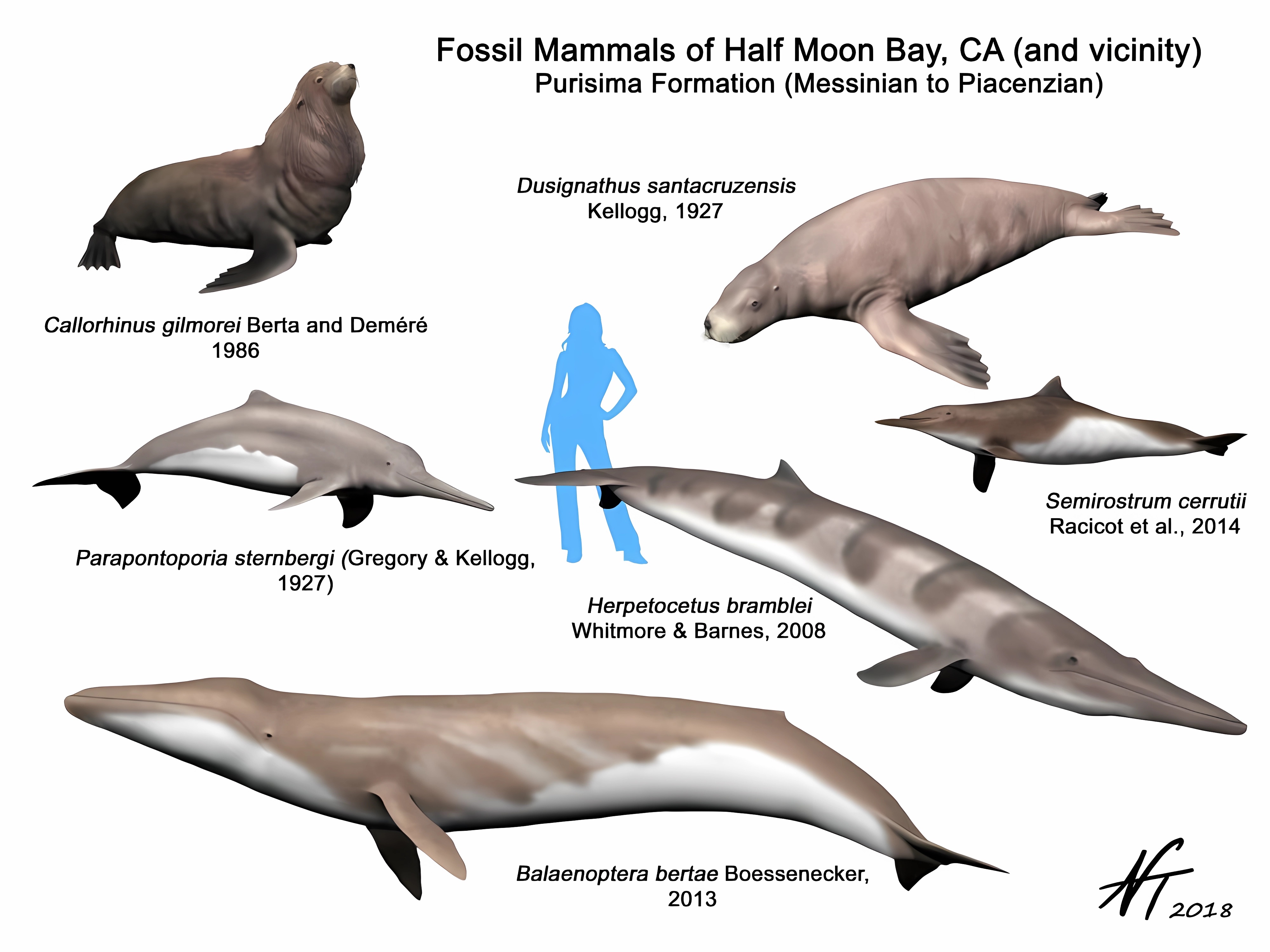Herpetocetus on:
[Wikipedia]
[Google]
[Amazon]
''Herpetocetus'' is a

genus
Genus ( plural genera ) is a taxonomic rank used in the biological classification of living and fossil organisms as well as viruses. In the hierarchy of biological classification, genus comes above species and below family. In binomial nom ...
of cetotheriid
Cetotheriidae is a family of baleen whales (parvorder Mysticeti). The family is known to have existed from the Late Oligocene to the Early Pleistocene before going extinct. Although some phylogenetic studies conducted by recovered the living ...
mysticete
Baleen whales (systematic name Mysticeti), also known as whalebone whales, are a parvorder of carnivorous marine mammals of the infraorder Cetacea (whales, dolphins and porpoises) which use keratinaceous baleen plates (or "whalebone") in their m ...
in the subfamily Herpetocetinae.
Taxonomy
There are four recognized species of ''Herpetocetus'': ''H. scaldiensis'', ''H. transatlanticus'',Whitmore, F.C., and L.G. Barnes. 2008. The Herpetocetinae, a new subfamily of extinct baleen whales (Mammalia, Cetacea, Cetotheriidae). In C.E. Ray, D.J. Bohaska, I.A. Koretsky, L.W. Ward, and L.G. Barnes (eds.). Geology and Paleontology of the Lee Creek Mine, North Carolina, IV. Virginia Museum of Natural History Special Publication 14:141–180. ''H. bramblei'', and ''H. morrowi''. An additional unnamed species from Japan has been referred to the '' nomen dubium'' '' Mizuhoptera sendaicus'' in the past, but the undiagnostic nature of the holotype of the latter means that it cannot be confidently referred to ''M. sendaicus''.
Survival into the Pleistocene
A recently discovered specimen of ''Herpetocetus'' from the Lower-MiddlePleistocene
The Pleistocene ( , often referred to as the ''Ice age'') is the geological epoch that lasted from about 2,580,000 to 11,700 years ago, spanning the Earth's most recent period of repeated glaciations. Before a change was finally confirmed in ...
(Gelasian
The Gelasian is an age in the international geologic timescale or a stage in chronostratigraphy, being the earliest or lowest subdivision of the Quaternary Period/System and Pleistocene Epoch/Series. It spans the time between 2.58 Ma (million ye ...
) Falor Formation
The Falor Formation is a geologic formation in California. It preserves fossils.
See also
* List of fossiliferous stratigraphic units in California
* Paleontology in California
Paleontology in California refers to paleontologist research occu ...
of northern California
California is a state in the Western United States, located along the Pacific Coast. With nearly 39.2million residents across a total area of approximately , it is the most populous U.S. state and the 3rd largest by area. It is also the m ...
indicates that ''Herpetocetus'' survived into the early Pleistocene, shedding light on the diversity of mysticetes in the early Pleistocene.Boessenecker, R.W. 2013. Pleistocene survival of an archaic dwarf baleen whale (Mysticeti: Cetotheriidae). Naturwissenschaften 100:4:365-371. Abstract. Since other cetotheriids became extinct by the end of the Neogene, it's therefore possible that some Pliocene representatives of Cetotheriidae made it into the Pleistocene to co-exist with extant mysticete species.
References
External links
* https://www.sciencedaily.com/releases/2013/04/130404122106.htm {{Taxonbar, from=Q3785315 Baleen whales Pliocene cetaceans Prehistoric mammals of North America Fossil taxa described in 1872 Prehistoric cetacean genera